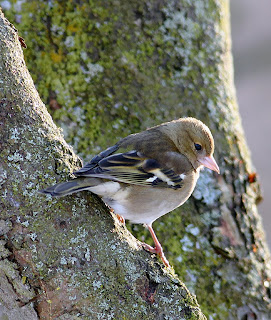It was our first opportunity for ringing for a while at Out Rawcliffe and the mornings are a bit easier to bear now with a 0545 start for Will and me.
Just on the perimeter of the farm I was reacquainted with a Little Owl at a previously regular spot from which they disappeared during the severe winter weather and then to not show at all through the spring and summer. Perhaps it’s a new bird, a juvenile moved into a vacant territory or one of the old birds that has actually been around all the time? If we catch it we will know.


Walking through the plantation in the half-light with our gear produced a Tawny Owl which flew up the centre track and then out of sight to roost up elsewhere. We don’t catch many Tawnies unless we work winter roosts when the owls get active as soon as it’s dark. Our mist netting proved uneventful with not much evidence of many new birds on site or moving through as warbler migration dries up a little. We caught 14 birds of 9 species, 10 new and 4 recaptures.
New: 1 each of Blue Tit, Great Tit, Chaffinch, Blackbird, Whitethroat and Goldfinch, the latter a fairly recent probably second or even third brood juvenile; also 4 Willow Warblers.
Recaptures: 1 each of Whitethroat, Sedge Warbler, Willow Warbler and Chiffchaff, the latter two were both adults in heavy complete moult.


Birds in the plantation that we didn’t catch included a Jay, a couple of Chaffinch, several Goldfinches, plus a family party of late brood Whitethroats.


Birding was also pretty quiet, the rarest bird being Grey Partridge that called from the wheat crop. We had new sightings of a Marsh Harrier as it hunted distant fields, but this species is now almost more common in the last few years in the Fylde than the poor Grey Partridge, especially since the harrier moved from being a scarce visitor to the area 20 odd years ago to become nowadays a local breeding species. Here is yet another very poor photograph of a very distant harrier but from this morning.

“Others” seen this morning were 2 Tree Sparrow, 2 Kestrel, 2 Buzzard, 50+ Swallows, 10 House Martin, 1 Skylark and 2 Reed Bunting.














.jpg)













5 comments:
not a great fan of trapping & ringing birds - that Little Owl looks terrified !
Phil, the Whitethroat is truly a beauty, love the long tail feathers, what a pose and of course the owls, are the tops~
S. Evans - It is a close view of the owl and the eyes may look different that’s all. In the hand all Little Owls are actually very placid and not at all terrified. I suggest you get hold of a copy of The Migration Atlas and see how much information is gleaned from ringing birds. Phil
aye, point taken.
So what do you hope to glean from ringing that Little Owl ?
C. Evans - It is still important to ring species that are less migratory as it helps to monitor bird populations. Ringing allows study of how many young birds leave the nest and survive to become adults, as well as how many adults survive the stresses of breeding, migration and severe weather. Changes in survival rates and other aspects of birds’ biology help us to understand the causes of population declines. Please note, this blog allows for comments but is not a discussion forum and the subject of ringing has been well explored in many media. Phil
Post a Comment